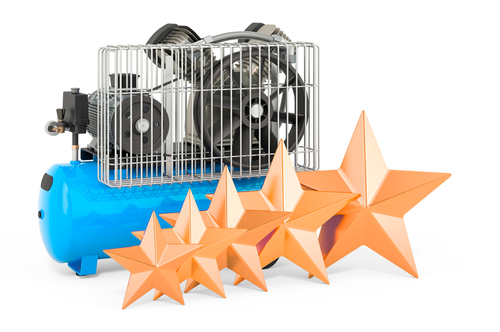
When it comes to purchasing an air compressor, understanding the different ratings can help you make an informed decision on which model is best suited for your needs. Air compressors come with a variety of ratings that indicate their performance capabilities, efficiency, and durability. In this blog post, we will break down the different air compressor ratings and provide tips on how to interpret and utilize them effectively.
What Are the Different Air Compressor Ratings?
1. Cubic Feet Per Minute (CFM): CFM is a measurement of the volume of air that an air compressor can deliver in one minute. This rating is important for determining the compressor’s ability to power air tools or inflate tires. The higher the CFM rating, the more powerful the compressor is. It is essential to match the CFM rating of the compressor with the requirements of the tools you plan to use.
2. Horsepower (HP): Horsepower is a measure of the compressor’s motor power. The higher the horsepower rating, the more powerful the compressor will be. A higher horsepower rating can lead to faster filling times and increased efficiency. However, it is important to note that horsepower alone does not determine the overall performance of the compressor.
3. PSI (Pounds per Square Inch): PSI measures the pressure at which the air is delivered by the compressor. This rating is crucial for determining the compressor’s ability to handle various air tool applications. Most air tools require a specific PSI range for optimal performance. Make sure to match the compressor’s PSI rating with the requirements of your tools to avoid damage or underperformance.
4. Tank Size: The tank size of an air compressor plays a crucial role in determining its runtime and efficiency. A larger tank size allows the compressor to store more compressed air, resulting in longer pump cycles and less frequent refills. Consider the type of tasks you will be performing and the frequency of use when choosing an air compressor with the appropriate tank size.
5. Duty Cycle: The duty cycle of an air compressor indicates the amount of time it can run continuously before requiring a cooldown period. Duty cycles are expressed as a percentage, such as 50% or 100%. For example, a compressor with a 50% duty cycle can run for 30 minutes before needing a 30-minute cooldown period. Understanding the duty cycle rating is essential for preventing overheating and prolonging the compressor’s lifespan.
How to Understand Air Compressor Ratings?
1. Research and Compare: Before purchasing an air compressor, take the time to research and compare different models based on their ratings. Consider your specific requirements, such as CFM, PSI, and tank size, and compare them with the ratings of various compressors. Reading customer reviews and feedback can also provide valuable insights into the performance and reliability of different models.
2. Calculate Your Air Tool Requirements: To ensure that your air compressor can handle the demands of your air tools, calculate the CFM and PSI requirements of each tool you plan to use. Add up the total CFM and PSI values to determine the minimum ratings that your compressor should have. This will help you avoid investing in a compressor that cannot deliver enough power for your tools.
3. Consider the Work Environment: The environment in which you will be using the air compressor can also impact its performance. For example, if you will be working in a noisy environment, you may want to consider a compressor with a lower decibel rating for quieter operation. Likewise, if you will be working in a small or confined space, a portable or compact compressor may be more suitable.
4. Consult with an Expert: If you are unsure about which air compressor ratings are most important for your needs, consider consulting with an expert or a professional in the field. They can provide guidance on the best compressor options based on your requirements and help you make an informed decision. Additionally, they can offer recommendations on maintenance and care to prolong the life of your compressor.
Summary
Understanding air compressor ratings is essential for selecting a model that meets your needs and expectations. By familiarizing yourself with the various ratings, such as CFM, horsepower, PSI, tank size, and duty cycle, you can make an informed decision on which compressor is best suited for your specific applications. Remember to research, compare, and consider your air tool requirements and work environment before making a purchase. With the right information and knowledge, you can find a high-quality air compressor that will serve you well for years to come.
Need an Air Compressor Store in Milwaukee, WI?
Established in 1932, Wenniger Compressor Co. specializes in air compressors, centrifugal pumps, diaphragm metering pumps, fans, generators, high-pressure air compressors, hoists (all types), lubricated reciprocating air compressors, oil separators, refrigerated air compressor dryers, rotary screw, sliding vane air compressors, submersible pumps, and vacuum pumps. Additional services include rental units, parts, lubricants, rotary screw compressors, service calls, routine maintenance, and much more. Our employees are all licensed to help you make the best decision. Contact us today to schedule an appointment or to get an estimate on the perfect service you need.
